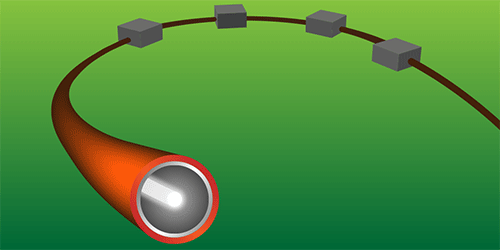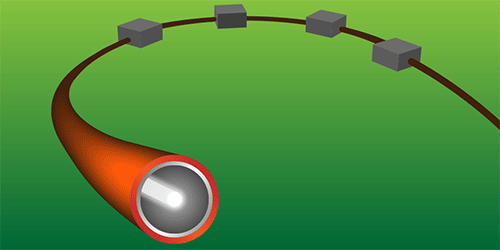Cooler Colliders
Scientists at CERN are currently studying the feasibility of a 100 tera-electron-volt (TeV) particle accelerator that produces 7 times more energy per collision than the Large Hadron Collider (LHC). Compared to the LHC, this future collider would have a circumference nearly 4 times as long and radiate 1000 times the power, an unprecedented amount of heat. Cooling the collider would be prohibitively expensive using current methods. But a new cooling scheme proposed by Roberto Cimino, of the INFN National Laboratory of Frascati, Italy, and CERN, would use significantly less energy, keeping the costs more manageable.
At the LHC, superconducting magnets contain and focus the particle beam, which continuously radiates photons and hence heat. A copper tube surrounding the beam helps carry away this heat by absorbing the photons, but a complex refrigeration system is needed to keep the magnets at 1.9 kelvin. This heat-removal process is already expensive, costing a few thousand dollars per hour of operation; estimates suggest that the weekly bill for a 100-TeV accelerator might soar into the millions.
The proposal by Cimino and his colleagues is to coat the interior of the copper tube with a thin layer of carbon that reflects all the incident radiation. The surface structure of the carbon coating is designed so that the radiation, and the heat it carries, is transported away from colder regions towards periodically placed room-temperature absorbers, which are easier and cheaper to cool than the tube itself. The authors claim that this design would reduce the power consumption associated with cooling by up to 20%, potentially cutting the associated costs in half.
This research is published in Physical Review Letters.
–Katherine Wright
Correction (14 January 2016): The Synopsis was updated to clarify the role of the superconducting magnets in a particle accelerator.





